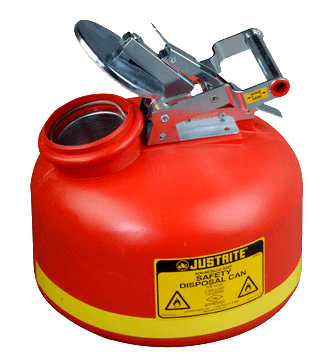Expert Liquid Waste Removal Melbourne: Keeping Your Environment Clean
Expert Liquid Waste Removal Melbourne: Keeping Your Environment Clean
Blog Article
How Fluid Garbage Disposal Functions: A Comprehensive Introduction of Techniques and Technologies Used

Overview of Liquid Waste Kind
The intricacy of liquid waste kinds necessitates an extensive understanding of their attributes and implications for disposal. Fluid waste can extensively be classified right into a number of types, consisting of commercial, community, agricultural, and harmful waste. Each classification exhibits unique buildings, needing specific management techniques to mitigate ecological and health dangers.
Industrial liquid waste originates from producing processes and frequently consists of a series of contaminants, such as heavy metals, solvents, and organic substances. Municipal liquid waste, mostly comprising wastewater from houses and business establishments, contains natural issue, nutrients, and virus (industrial wastewater treatment). Agricultural fluid waste, including overflow from farms, might consist of plant foods, pesticides, and animal waste, positioning threats to water top quality and communities
Hazardous fluid waste is defined by its toxicity, reactivity, or possible to cause injury. Understanding these diverse fluid waste kinds is important for developing efficient disposal approaches and guaranteeing conformity with environmental regulations.
Physical Treatment Techniques

Screening is the preliminary action, where bigger bits and debris are eliminated from the liquid waste utilizing screens or grates. In sedimentation tanks, heavier bits work out at the bottom, forming a sludge layer, while the made clear liquid can be additional dealt with.
Filtration is one more important approach that involves passing the liquid with permeable products, such as sand or membrane layers, to catch smaller sized bits. This action improves the high quality of the fluid, making it appropriate for subsequent therapy processes.

Chemical Treatment Strategies
Chemical treatment strategies are crucial for successfully managing liquid waste, particularly in resolving dissolved and colloidal impurities that physical methods might not properly get rid of. These techniques use numerous chemical representatives to counteract, precipitate, or change hazardous compounds into much less damaging kinds.
One common technique is coagulation and flocculation, where chemicals such as alum or ferric chloride are included to advertise the aggregation of put on hold particles. This process improves sedimentation, enabling easier elimination of the resulting sludge. Additionally, oxidation processes, utilizing representatives like chlorine or ozone, are used to damage down complicated natural substances and pathogens, rendering the waste much safer for discharge or additional therapy.
Neutralization is an additional vital technique, which readjusts the pH of acidic or alkaline waste streams to neutral degrees, preventing potential damage to downstream systems and the atmosphere. Additionally, advanced oxidation procedures (AOPs) utilize combinations of oxidants and ultraviolet light to degrade persistent contaminants, achieving a greater level of treatment efficiency.
Organic Treatment Procedures
Biological therapy processes play an important duty in the monitoring of fluid waste by making use of microbes to disintegrate raw material and decrease impurity degrees. These processes can be broadly categorized into anaerobic and aerobic therapies, each using details microbial communities to achieve reliable waste destruction.
Cardiovascular treatment includes the use of oxygen to assist in the break down of organic materials by germs. This process is frequently carried out in triggered sludge systems, where aeration tanks give a helpful setting for microbial development, resulting in the oxidation of natural pollutants. The resultant biomass can be divided from treated effluent via sedimentation.
In comparison, anaerobic blog treatment occurs in the lack of oxygen, depending on different microorganisms to break down raw material. This technique is especially advantageous for high-strength waste, as it creates biogas, a renewable resource resource, while decreasing sludge manufacturing. Technologies such as anaerobic digesters are often employed in commercial and community applications.
Both anaerobic and cardiovascular organic treatments not just reduce the ecological effect of fluid waste but additionally help with source healing, making them essential parts of sustainable waste administration approaches. Their performance, versatility, and performance support their extensive execution across different markets.
Arising Technologies in Disposal
Ingenious approaches to liquid garbage disposal are Resources rapidly progressing, driven by advancements in technology and a boosting focus on sustainability. Among these arising technologies, membrane bioreactors (MBRs) have acquired traction for their capability to combine biological treatment with membrane layer purification, causing high-quality effluent that can be reused in numerous applications. MBRs enable smaller sized impacts and extra reliable procedures compared to typical systems.
An additional encouraging growth is using pop over to these guys anaerobic food digestion incorporated with nutrient recuperation technologies, which not just treats liquid waste but also generates biogas and recovers valuable nutrients like nitrogen and phosphorus. This dual advantage boosts source effectiveness and lowers ecological influence.
In addition, advanced oxidation processes (AOPs) are being adopted for the degradation of intricate natural contaminants. These methods utilize effective oxidants and drivers to damage down pollutants at the molecular level, offering a very efficient service for challenging waste streams.
Moreover, the assimilation of man-made intelligence and machine understanding in waste monitoring systems is maximizing functional performance and predictive upkeep, causing decreased costs and enhanced environmental compliance. These modern technologies show a significant change towards even more sustainable and effective fluid waste disposal techniques.
Conclusion
In conclusion, efficient fluid waste disposal demands an extensive understanding of different techniques and modern technologies. By continuously progressing these methods, it comes to be possible to attend to the growing difficulties linked with liquid waste, ultimately contributing to ecological defense and source recovery.
Liquid waste disposal is an important facet of ecological management, requiring a comprehensive understanding of various techniques and innovations tailored to different waste types. Liquid waste can broadly be categorized into several kinds, consisting of commercial, metropolitan, farming, and hazardous waste. Agricultural fluid waste, consisting of overflow from farms, may consist of fertilizers, pesticides, and animal waste, presenting dangers to water quality and communities.
Different physical therapy approaches play an essential function in taking care of fluid waste properly - industrial wastewater treatment.In verdict, efficient liquid waste disposal demands a detailed understanding of various methods and technologies
Report this page